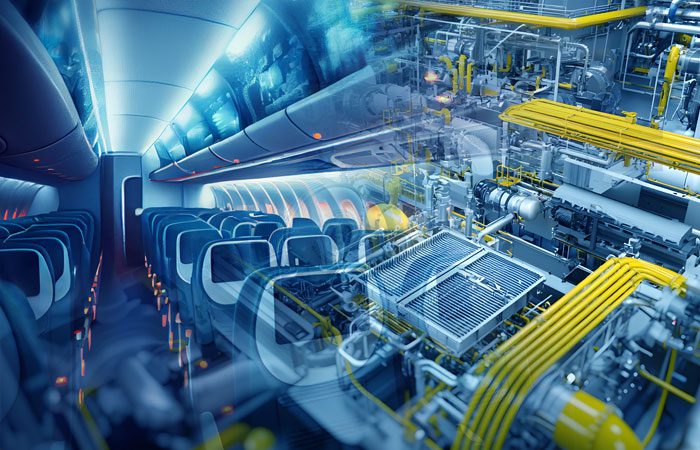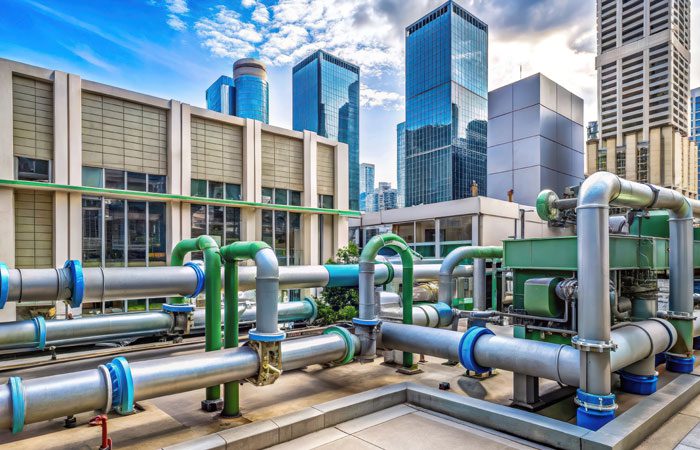
Future-Ready Aircraft: Trends Shaping Aerospace Design in 2025 and Beyond
The aerospace industry is at a pivotal point. Faced with urgent sustainability goals, rising passenger expectations, and rapid technological advancements, the future of aircraft design is being reshaped at a breathtaking pace. As we enter the second half of the decade, the focus is not only on aerodynamics and speed but also on eco-efficiency, automation, smart systems, and digitalization. Here’s a look at the aerospace design trends of 2025 and beyond, and how they’re defining next-generation aircraft.
- Sustainable Aircraft Design Innovations
Environmental regulations and climate commitments are accelerating the development of green aerospace design. Airlines and manufacturers are prioritizing fuel-efficient aircraft design to reduce carbon emissions and operational costs. Innovations such as lighter composite materials, improved wing structures, and advanced propulsion systems are being incorporated to improve energy efficiency.
Electric and hybrid aircraft are no longer a futuristic dream. In 2025, prototypes are already undergoing test flights, with short-haul and regional applications being the immediate focus. Hybrid-electric propulsion systems help cut fuel burn significantly, marking a big leap toward net zero aircraft innovations.
- Decarbonizing the Aerospace Industry
Sustainability is driving a paradigm shift in aerospace engineering trends 2025 and beyond. Leading aerospace OEMs are collaborating with governments and tech firms to develop decarbonizing aerospace industry roadmaps. Key strategies include:
- Hydrogen fuel cell integration
- Electrified ground operations
- Retrofitting existing fleets with eco-upgrades
New sustainable aircraft design innovations also extend to cabin materials, waste management systems, and recyclable components.
- Additive Manufacturing in Aerospace
Additive manufacturing in aerospace, commonly known as 3D printing, is transforming the way components are designed and built. This approach allows engineers to create lightweight yet strong parts with complex geometries that were previously unachievable through traditional methods.
By reducing part counts, improving performance, and enabling faster prototyping, additive manufacturing supports both aircraft innovation 2025 and the push for sustainability. It’s an essential tool in the future aircraft design ecosystem.
- Digital Twin Technology Aircraft
One of the most groundbreaking advancements in advanced aerospace engineering is the application of digital twin technology in aircraft. A digital twin is a virtual replica of a physical asset, updated in real-time with sensor data. It helps engineers monitor performance, predict maintenance needs, and optimize lifecycle costs.
How digital twin is shaping aerospace engineering is evident in the way aircraft systems are now tested, validated, and maintained. From simulating stress factors on a wing structure to monitoring avionics behavior, digital twins offer unmatched precision and predictive capability.
- Smart Aircraft Systems and Automation
As aerospace enters the age of autonomy, smart aircraft systems are taking center stage. These include AI-driven avionics, self-diagnosing systems, autonomous taxiing, and real-time performance monitoring. The ultimate goal is safer, more efficient operations with minimal human intervention.
At the same time, aerospace design automation tools are helping engineers streamline complex tasks such as load calculations, CFD analysis, and component integration. These tools enhance speed to market and reduce design errors.
- Aircraft Design Evolution and Passenger Experience
The aircraft design evolution is not just about performance—it’s also about enhancing the passenger experience. Cabin designs are becoming modular, with more focus on space optimization, noise reduction, and air quality. Ergonomics, smart lighting, and inflight connectivity are now part of the future-ready aircraft experience.
Structural innovations like blended wing bodies (BWB) and morphing wings are also influencing the future of aircraft design, offering better fuel economy and aerodynamic performance.
- Aerospace Industry Trends to Watch
Looking forward, the most defining aerospace industry trends include:
- Electrification of regional aircraft
- Vertical Take-Off and Landing (VTOL) urban mobility solutions
- Global supply chain decentralization
- Cybersecurity for avionics and autonomous systems
- Circular economy models for aircraft manufacturing and recycling
All these developments are backed by strong R&D investments, public-private partnerships, and stricter policy frameworks across the globe.
TAAL Tech’s Role in Shaping the Future
TAAL Tech, a leading global engineering services provider, is actively contributing to the evolution of future-ready aircraft. With strong capabilities in aerospace design automation tools, CAD modeling, structural analysis, and embedded systems, TAAL Tech supports global OEMs and Tier-1 suppliers in advancing next-generation aircraft design. Their domain expertise in digital twin technology, additive manufacturing in aerospace, and fuel-efficient aircraft design positions them as a valuable partner in building a sustainable, efficient, and intelligent aerospace future.
The future of aircraft design is driven by the urgent need for sustainability, efficiency, and digital transformation. From green aerospace design to smart aircraft systems, the shift is systemic and bold. As 2025 unfolds, companies that invest in advanced aerospace engineering and embrace technologies like digital twins, hybrid-electric propulsion, and design automation will lead the next chapter of aircraft innovation 2025.
The skies of tomorrow will be smarter, cleaner, and more connected—ushering in an era where aerospace design trends 2025 and beyond not only define aircraft but redefine aviation itself.


